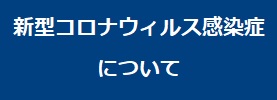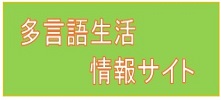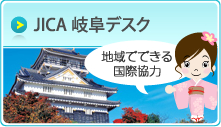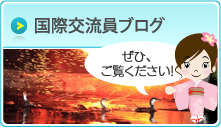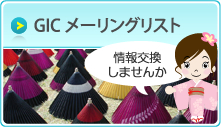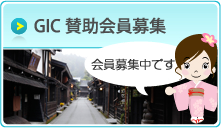 |
(2022.12.23) |
Recently, I went on a trip to four cities in Kyushu, and I was able to see some differences between Gifu and Kyushu. Let's explore some of those differences and why they exist!
Fukuoka
At first glance, the biggest city in Kyushu: Fukuoka--with 1.5 million inhabitants--and Gifu, with only 400,000, may not seem to have much in common. Historically, they are also very different.
As you may already know, Gifu plays a very rich role in the Sengoku period of Japanese history, which in English is referred to as the Warring States period. It began in 1467 and is widely viewed to have ended with the 1603 formation of the Tokugawa shogunate (a samurai military government). If you live in Gifu City, you must've seen Oda Nobunaga (1534-1582) on the buses! He's one of the three samurai credited with unifying Japan, and he lived in Gifu Castle from 1567! Gifu is in the middle of Japan, so it was seen as having a very strategic location and was therefore a vital stronghold for samurai warlords. Nobunaga understood this better than most, in part because he was born nearby in present-day Aichi prefecture. Nobunaga was actually the person who gave Gifu its current name after he conquered both the town and its castle. He had actually conquered most of central Japan by 1582, but was betrayed by an ally, which resulted in his downfall and seppuku, which is ritual suicide done by samurai upon certain defeat. Nobunaga's achievement of bringing almost half of the provinces in Japan under his control paved the way for the unification of Japan, which was achieved by Toyotomi Hideyoshi. This unification was then formalised by the creation of the aforementioned centralised government by Tokugawa Ieyasu in 1603. The creation of the Tokugawa shogunate marked the beginning of the Edo period of Japanese history, which ended in 1867.
While Gifu was once a vital stronghold for perhaps the most famous samurai in medieval Japanese history, Fukuoka, as a coastal port only 214km away from the Korean peninsula, also played a major role in Japanese history earlier on. Ancient history can be difficult to study, as limited records and artefacts remain from these times. However, evidence suggests that Fukuoka was vital in very early trade and relations between the Japanese archipelago and other East Asian nations. It is estimated that rice farming began in present day Fukuoka in about 500BC and spread all across Japan. In addition, written Chinese evidence shows that a gold seal found in Fukuoka dates back to 57AD, and is evidence of communication with China at that time. Later, diplomatic missions set off from Fukuoka to both China and Korea, and they brought back Buddhism, which became a widespread religion in Japan. If you visit this vibrant city, you can see the Shofukuji temple, the first ever Zen monastery in Japan, the origin of Japanese tea culture and now famous worldwide. While you can't go into the temple's buildings, you can enjoy the beautiful grounds. However, this close proximity to neighbouring countries brought danger as well as trade and religion--namely, the two Mongol invasions of the late 1200s. Fukuoka's samurai fought off the invasions with the help of powerful storms which destroyed the enemy ships. Gifu is a landlocked prefecture, so the samurai who lived in Gifu did not have to contend with foreign invasion by sea, rather with enemy samurai clans. Just as Gifu Castle is built strategically on Kinka mountain to prevent invasion, samurai built a defensive wall in Hakata Bay after the first invasion of Fukuoka.
Today, Fukuoka is a bustling city with many restaurants and busy nightlife. In the 19th Century, Hakata town and Fukuoka town were combined to create beautiful Fukuoka City. As a tribute to this past, the most famous food Fukuoka offers is Hakata ramen, otherwise known as tonkotsu ramen after its tonkotsu broth. Tonkotsu broth is made from boiling pork bones, creating a white soup. Gifu isn't known for ramen or pork, but it is famous for another meat product: Hida beef. Hida is the northernmost region of Gifu prefecture, and the beef there is known for being very high quality. The rich, marbled fat simply melts in your mouth!
Overall, Fukuoka and Gifu are both very important places in Japanese history. Both of them also have delicious local cuisine!
Nagasaki
Unlike Fukuoka City, Nagasaki City and Gifu City actually have a similar population size, as Nagasaki is also home to approximately 400,000 people. However, the histories of these two cities are very different.
Nagasaki isn't known for its samurai history like Gifu. Instead, it is known for overseas trade links. Fukuoka may have been important in ancient Japanese history when links with other East Asian countries began, however, Nagasaki was, importantly, the place where the first Europeans landed in Japan. The Portuguese were the first Europeans to arrive in 1542, and with them came Catholic missionaries whose goal was to spread their religion. Nobunaga may have accepted the missionaries' presence since these new trade links brought more modern weaponry, however both of his successors--Hideyoshi and Tokugawa--were less willing to accept their presence. In fact, Hideyoshi actually banned Christianity in 1587, and then in 1639 the Tokugawa shogunate banned Portuguese ships from entering the country altogether. This was the beginning of a longstanding isolationist policy, preventing Japanese people from leaving Japan and foreign nationals from entering.
If you visit Nagasaki City there are numerous tourist sites where you can learn all about this. Firstly there's Dejima. In Japanese, 出島(でじま)has the kanji 出, which means "to leave", and the kanji 島, which means "island." In fact, this manmade island was built in 1636 to confine Portuguese people who were then expelled from Japan! The shogunate continued to permit trade with the Dutch, but also did not allow them to fully enter the country either! Later, a Dutch factory which had previously been elsewhere in Nagasaki prefecture was moved to Dejima, and the Dutch traders were housed there. The shogunate did not allow them to leave or even move freely in Japan. This was Japan's only gateway to the West until the 1850s. Today, Dejima is no longer an island due to land reclamation. However, you can still visit Dejima and see artefacts from the time when it was home to the Dutch, and learn about their way of life on this small island.
Secondly, as I mentioned earlier, Christianity was banned in Japan. However, by this point many Japanese people had converted to Christianity, and more specifically to Catholicism. Since Nagasaki had been an important entry point for foreign missionaries, there were many Christians there. Both Hideyoshi and then the Tokugawa Shogunate were unhappy with this and killed many Christians in Nagasaki. Hideyoshi killed 26 Christians in 1597 as a warning, and today there stands a monument in the memory of these 26 martyrs. A church was built in their honour. Until as late as 1873, Christians had to practice their religion in secret.
In more recent history, the name Nagasaki is known worldwide as the site of the second ever atomic bombing. It took place on August 9th, 1945, only 3 days after the atomic bombing of Hiroshima. Approximately 40,000 people died in the bombing, and many more were injured and had their homes destroyed. Today in Nagasaki there is both a Peace Museum and a Peace Park where you can learn about the devastating impact of nuclear weapons. Many paper cranes can be seen, representing the hope for peace and the abolition of these weapons. Gifu was not victim to an atomic bomb, however, like many other major cities and industrial hubs in Japan, it was firebombed in 1945. Peace continues to be something that we strive for today, and hopefully such tragic events will never be repeated.
Beppu
Gifu, Nagasaki, and Fukuoka cities are the capitals of their respective prefectures, which also share the same names. Oita City of Oita prefecture follows this same pattern, so Beppu is not the capital. As such, it is markedly smaller with a population of 122,000 while Oita City has almost 480,000 people. Despite this, it is a very popular tourist site due to the presence of onsen, or hot springs. Gifu prefecture has Gero City, which, like Beppu, is renowned for its lovely onsen.
Japan's geography is unique as it is an archipelago located on tectonic plate boundaries which result in a high number of naturally occurring earthquakes and volcanoes. This geology is also the reason for the numerous hot springs throughout Japan, which have become an important part of Japanese culture. Gero is surrounded by beautiful mountainous scenery and is one of the 3 most famous hot springs in Japan. The water here is known for being smooth and smoothing the skin of those who bathe in it, due to the alkaline in the water. Foot baths are dotted throughout the city, so you can stop anytime to take a dip. Like Gero, the charm of Beppu's onsen is well-known. There are many onsen in Beppu where you can bathe, as in Gero, and there are even hot sand baths. However, in Beppu there are also "jigoku", which means "hells." As you may expect from the name, these pools are so hot that they are only for viewing, not for bathing! Each hell has a slightly different temperature, but most of them sit in the 90s range in Celsius. You can see the bright blue of the "sea hell", the red "blood pond hell", caused by clay, a bubbling mud which is said to look like the top of a monk's head, a remarkable geyser spraying water up from underground, and even crocodiles being raised in the high temperatures! The smell of sulphur permeates the whole area, and you can see steam rising from the grates in ordinary streets, showing the boiling temperatures of the water below the surface.
In Japan, regional specialties are common, especially when it comes to food. Fruit in Japan is cultivated with great care and there is even a market for luxury fruit! This has gained a lot of traction online, with people from other countries baffled at the prices! However, not all fruit in Japan is this expensive, and you can enjoy local fruit products when you visit new places. While persimmons are grown in numerous places in Japan, Gifu's persimmons are particularly known for being larger and having a deliciously sweet taste. They are harvested in autumn, so they can frequently be found in Gifu supermarkets at this time. Oita is known for the kabosu, a citrus fruit that is harvested in late summer and early autumn when it is still green and has not yet turned yellow. In Beppu, you can find many omiyage-- or souvenir products--containing kabosu. For example, some packages may contain kabosu juice, kabosu beer, and kabosu cookies, to name a few. So, another thing Gifu and Oita have in common are their delicious fruits!
Kagoshima
The final stop on my trip was Kagoshima City. With a population of 600,000 people, Kagoshima is located on the southernmost part of Kyushu. Gifu's extensive samurai history during the Warring States period has been discussed, and Kagoshima is another place in Japan that shares a rich samurai history. Notably, present-day Kagoshima prefecture was once known as the Satsuma Domain. This powerful samurai domain run by the Shimadzu family even conquered Okinawa, known then as the Ryukyu Islands during the Edo period. Foreign trade was forbidden at this time, which enabled this domain alone to trade with Ryukyu and enrich themselves. As was the norm for samurai lords, the Shimadzu family had a castle and a strolling garden to enjoy. Many Japanese gardens you can see today were once used by the elite ruling class, namely the samurai during the Edo period, to enjoy scenery and impress guests. Edo period gardens often have ponds and even artificial hills, and Kagoshima's Senganen is no exception. This large garden remains a tourist site today and uses the borrowed scenery of Kagoshima Bay and Sakurajima volcano. Gardens like these remind us that, while the samurai were serious warriors with a strict hierarchy, they also enjoyed recreational time and luxuries.
As well as enjoying the strolling garden as many other feudal lords did, striving for modernity was what set the Shimadzu family apart from their contemporaries. In the 1850s, Japan was forced to reopen to the Western world at large and signed unequal treaties, leading the Shimadzu clan to realise the importance of modernising technology and industralising in order to defend against potential Western enemies. On the Senganen grounds, the Shuseikan Industrial Complex was built. Part of it still stands today and has been given status as a World Cultural Heritage Site by UNESCO for being part of Japan's industrial revolution. The site was primarily used for shipbuilding and casting canons so as to be able to defend Kagoshima Bay, and it has been described as the first modern factory in Japan, showing the importance of Kagoshima in Japan's early modern history.
As well as having industrial importance, the Satsuma Domain was very important politically in the ending of the Edo period and the start of modern Japan in 1868 with the Meiji Restoration. There is even the Museum of the Meiji Restoration in Kagoshima today, where you can learn about the domain's vital role in bringing about a completely new system of government in Japan. The samurai class was removed and the Emperor reinstated. The Satsuma Domain formed an alliance with other samurai and fought against the shogunate, even succeeding in overthrowing it. This is known as the Boshin Civil War, which lasted from 1868 to 1869. Perhaps the most prominent Satsuma samurai involved, whose story is covered extensively in the museum, is Saigo Takamori. For his leadership in this fight against Japan's old order, he is considered one of the most important people in bringing about the Meiji Restoration.
The Gifu Castle we can see today was reconstructed in 1956. The original was destroyed in 1600, shortly after Nobunaga's death in the lead up to the Battle of Sekigahara. This battle also took place in Gifu and is yet another vital part of Japanese history, leading to the very reunification of the country itself following the victory of the Tokugawas.
Kagoshima Castle was also destroyed in battle, namely in the Seinan War of 1877, also known as the Satsuma Rebellion. The difference is that, unlike Gifu Castle, Kagoshima Castle has not been rebuilt except for one outer gate. The moat, a bridge across it and the castle's outer wall are all that remain today. The Seinan War was also a civil war, the last one of its kind to date in Japan. Although Saigo Takamori had previously fought on the side of those who set up the new Meiji government, in this war, he found himself on the opposing side after the new government proceeded to make policies that sidelined not just him, but all samurai. The war ended with Saigo Takamori's ritual suicide, ending the Satsuma Domain for good.
One final difference is in the scenery of Kagoshima and Gifu. Kinkazan overlooks Gifu City, and in Hida there are many mountains as it is part of the Japanese alps. Kagoshima's most famous mountain is the aforementioned volcano, Sakurajima. This volcano was merely an island in the bay until its most recent major eruption in 1914, when cooled lava flow joined it to the mainland. However, as this connection is on the other side of the bay, from Kagoshima City it may still look like an island. It can be reached by a ferry that runs for 24 hours and only takes 15 minutes. Sakurajima actually had 3 peaks, which gives it a unique appearance. The northern peak is the tallest, standing at 1,117m. Two of these were once active volcanoes, but now only the southern peak remains active. These eruptions can occur multiple times a day, but luckily, they are small and spew only smoke and ash. Still, this debris covers the surrounding area daily, which is home to about 4,500 people. They often have to sweep up ash, children must wear hard-hats on their way to and from school, and annual evacuation drills are carried out, creating a way of life markedly different to that of Gifu, and of most places in the world.
This concludes the exploration of the differences between Gifu and four major cities in Kyushu, in regards to demographics, history, tourism and cuisine. I have only scratched the surface of all of these places, including Gifu. There is truly so much to learn about all of them.

